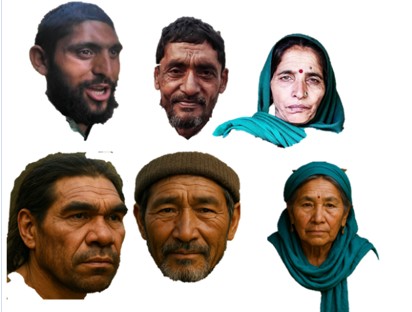Authored by: Indu Sharma (Ph.D.) and Varun Sharma (Ph.D.)

The Fascinating World of Human Look-Alikes
Have you ever been astonished seeing two people who look remarkably similar but aren't related? Or come across viral posts of strangers who look like twins from opposite parts of the world? This phenomenon of “doppelgängers” has intrigued us for centuries. In India, we often say, “Poori duniya mai ek shakal ke saat (seven) insaan hote hai” — meaning “there are seven people with the identical face.”
A groundbreaking study now reveals that people who look uncannily similar actually share large portions of their DNA — beyond facial resemblance. This is the first scientific investigation into unrelated look-alikes and its findings are both surprising and profound.
The Digital Age of Doppelgänger Discovery
In the internet era, such discoveries have gone global. Social media and dedicated platforms now connect “twin strangers” from across continents. Canadian photographer François Brunelle documented these resemblances over 20 years in his project.
Researchers took it further by using advanced AI — the kind used in airport security and phone facial recognition — to objectively confirm visual similarity. Once confirmed, DNA from these “AI-validated” look-alikes was analyzed for genetic commonality.
The Genetic Detective Work
The results were stunning: these strangers shared thousands of genetic markers, especially those affecting facial structure, bones, and appearance. Nearly 20,000 shared genetic variants were found, many tied to physical traits like eye spacing, jaw shape, etc.
Beyond the Face
Interestingly, similarities also extended to height, weight, and even behaviors like smoking or education level. It suggests shared genes might influence broader traits — not just looks. Still, life experience plays a role too, like how ingredients in the same recipe can yield different dishes depending on how they’re cooked.
Nature vs. Nurture?
Could environment or lifestyle shape this resemblance? Researchers studied DNA methylation and the microbiome. Result: these factors played only a minor role. Genetic code — “nature” — dominates when it comes to facial similarity. However, shared biological age and body weight among look-alikes suggest subtle environmental effects may still be present.
The Human Story
Many doppelgänger pairs felt instantly connected — some even shared careers or personality traits. It’s a reminder that behind the science lies a deeper story about identity, connection, and what it means to be human.
Looking Ahead
As genomic technology advances, we may uncover even deeper links between DNA and human expression — from personality to choices and beyond. For now, if you meet someone who looks just like you, it might not just be coincidence — it could be genetics echoing through time.
Read full article at: 10.1016/j.celrep.2022.111257